Ukraine’s Oldest Lutheran Church Re-opens in Odesa
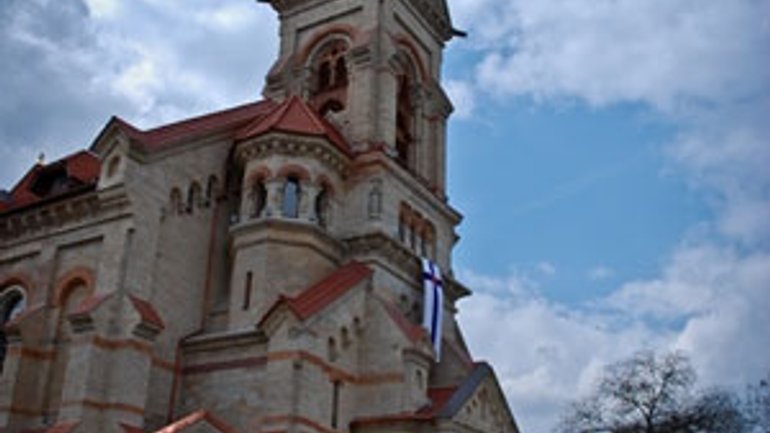
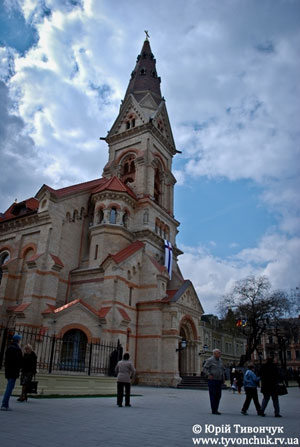 After nearly a century, one of the oldest Evangelical Lutheran churches of Ukraine re-opened its doors for parishioners. The Lutheran St. Paul Church in Odesa will now have room for 500 people. Concerts of organ players from all over the world will be held here. A modern lighting system “smart house” has been installed in the church.
After nearly a century, one of the oldest Evangelical Lutheran churches of Ukraine re-opened its doors for parishioners. The Lutheran St. Paul Church in Odesa will now have room for 500 people. Concerts of organ players from all over the world will be held here. A modern lighting system “smart house” has been installed in the church.
A Tragic Story with a Happy Ending
Many generations of Odesa residents almost came to terms with the image of the bare skeleton that was once one of the more beautiful buildings in Odesa – the Lutheran St. Paul Church.
The church was built in 1827 and closed down in 1937. In the Soviet era, the cross was removed from the top and the church was used as a library, a gym, and later a storehouse. Germans are certain that unwanted people were shot in the building. And the building itself was to be demolished. But the cultural and student public of the city saved the church. “In the Odesa Conservatoire (facing the church), works Professor Yurii Dylyi. As a student he headed an initiative group that opposed the demolition of the church. Many Odesa cultural figures opposed the destruction of the building. They went to Moscow where they obtained permission to meet with the then minister of culture, Kateryna Furtseva. And Furtseva said no to the destruction,” said Claus Roepke, the retired senior advisor and “godfather” of the church.
In 1976, the church was set on fire and the building burned down. The persons responsible were never found. From time to time, donations rolled in from higher education institutions and companies of the city to renew the architectural monument. However, by the end of the 1990s, the physical deterioration of the building exceeded 80%. In 2005, Germans undertook to restore the church.
The restoration of the building cost 7 million euros. Two thirds of the amount was provided by the Lutheran Church in Bavaria, certain contributions were made by the governments of that land and Germany. Only 300 thousand euros were donated by private individuals. They were spent on bells, an organ, and the painter’s work. The interior of the church was painted by a renowned German painter, Tobias Kammerer. “Taking into account the traditional canons, the painters are oriented towards modernity and even try to glimpse into the future. The red, blue, and golden colors symbolize the Trinity,” explained the painter.
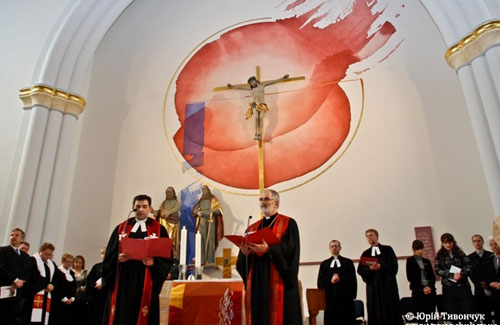 The crucifix is the central element of the interior. One can see figures of saints Peter and Paul at the feet of Jesus. On the ceiling Tobias painted a sea and a ship in the form of a church with sails. Its masts cross to form a cross. Claus Roepke calls the painting symbolic: “Saint Peter traveled a lot in boats.” In addition, one should remember that Odesa is a coastal city and the church itself used to serve as a beacon for sailors for its cross was seen from afar. Nowadays, the landscape of the city has changed and modern sailors no longer have the need for such landmarks. However, the Germans decided to make the cross illuminated.
The crucifix is the central element of the interior. One can see figures of saints Peter and Paul at the feet of Jesus. On the ceiling Tobias painted a sea and a ship in the form of a church with sails. Its masts cross to form a cross. Claus Roepke calls the painting symbolic: “Saint Peter traveled a lot in boats.” In addition, one should remember that Odesa is a coastal city and the church itself used to serve as a beacon for sailors for its cross was seen from afar. Nowadays, the landscape of the city has changed and modern sailors no longer have the need for such landmarks. However, the Germans decided to make the cross illuminated.
“It will not be illuminated by searchlights but it will be covered with special optical fiber to radiate light. It is a unique solution for Odesa,” said the project supervisor Torsten Oswald.
Interior Decoration
Returning to the interior decoration of the church, one can see an icon of the Mother of God from the 18th century near the silvery alcove of the church. “The icon was presented by a resident of Odesa. In Soviet times, she took it out of a church in western Ukraine and secretly kept it at home all of these years,” said Claus Roepke.
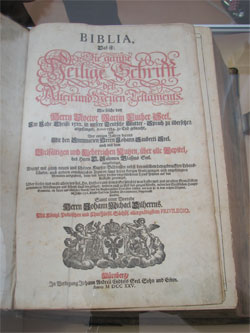 During the restoration of the church, the workers found an old Bible, a small amount of money of that time, a letter signed by the first architect of the building, and other interesting antiquities. The Germans inventoried the findings and placed them on exhibit in glass cases. Thus, a small exposition of its history was established in the church. One can see here fragments of church plates, books, and other documents. In addition, a manually controlled concert organ was brought to the church. “One can perform music of any age using the organ. We have all necessary conditions to organize organ concerts in the church,” assured Claus Roepke at the opening ceremony.
During the restoration of the church, the workers found an old Bible, a small amount of money of that time, a letter signed by the first architect of the building, and other interesting antiquities. The Germans inventoried the findings and placed them on exhibit in glass cases. Thus, a small exposition of its history was established in the church. One can see here fragments of church plates, books, and other documents. In addition, a manually controlled concert organ was brought to the church. “One can perform music of any age using the organ. We have all necessary conditions to organize organ concerts in the church,” assured Claus Roepke at the opening ceremony.
Inside the church chandeliers were placed in the form of scrolls of ancient manuscripts. The altar and baptismal font were made from the old stones of the church.
In the process of the reconstruction, many stones had to be replaced due to their poor condition. “In Ukraine, the worst condition of a building is described in technical documents as ‘unfit for use.’ The building of the church was much worse when we began to work on it,” said the director of the main contractor company, Volodymyr Sukhanov. During the nearly two years of the reconstruction, the builders strengthened its foundation with piles. In addition, they had to reject many original stones from the walls of the church due to their terrible condition and replace them with new ones. Reinforced concrete posts were installed in the walls of the church and a special belt was put round them to make them stronger.
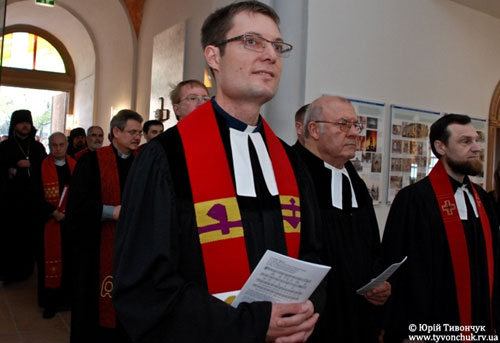 In addition, the Germans made sure that the building would meet all modern requirements as well as be energy efficient. “A special installation supplies power and heat. We used economy bulbs and additional heat insulation in the façade. The building is controlled by the ‘smart house’ system,” said Oswald.
In addition, the Germans made sure that the building would meet all modern requirements as well as be energy efficient. “A special installation supplies power and heat. We used economy bulbs and additional heat insulation in the façade. The building is controlled by the ‘smart house’ system,” said Oswald.
Despite the modern approaches, the church has retained its old appearance. Though it did became a little smaller. Due to the complete destruction of the holy place, the apse, the building had to be reduced by one third. The construction of a cultural and educational center is being completed in the place of the former apse. The local representative office of the national minority and charitable organization Bavarian House will be located here. Some of the offices will be put on lease.
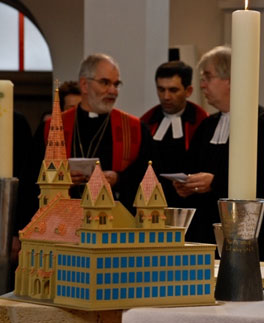 The church’s warm pink shade of limestone is pleasant to the eye. The Germans assure that the color will not fade with time. “We have tried many mixes to soak the stone with in order to avoid deterioration and preserve the color. We chose the material used to paint the famous cathedral in Keln,” said Oswald
The church’s warm pink shade of limestone is pleasant to the eye. The Germans assure that the color will not fade with time. “We have tried many mixes to soak the stone with in order to avoid deterioration and preserve the color. We chose the material used to paint the famous cathedral in Keln,” said Oswald
Passing through the massive wooden doors decorated with forged metal one will see glass doors with the inscription “Peace to You” in nine languages.
The Germans foresee the church attracting a lot of tourist. The opening of the church was a grand celebration that lasted for a week. The first service was attended by the burgomaster of Bavaria, who presented 250 bushes of roses for the church. A brass band played in the city garden and a celebratory concert of Bach’s pieces was held in the church.









